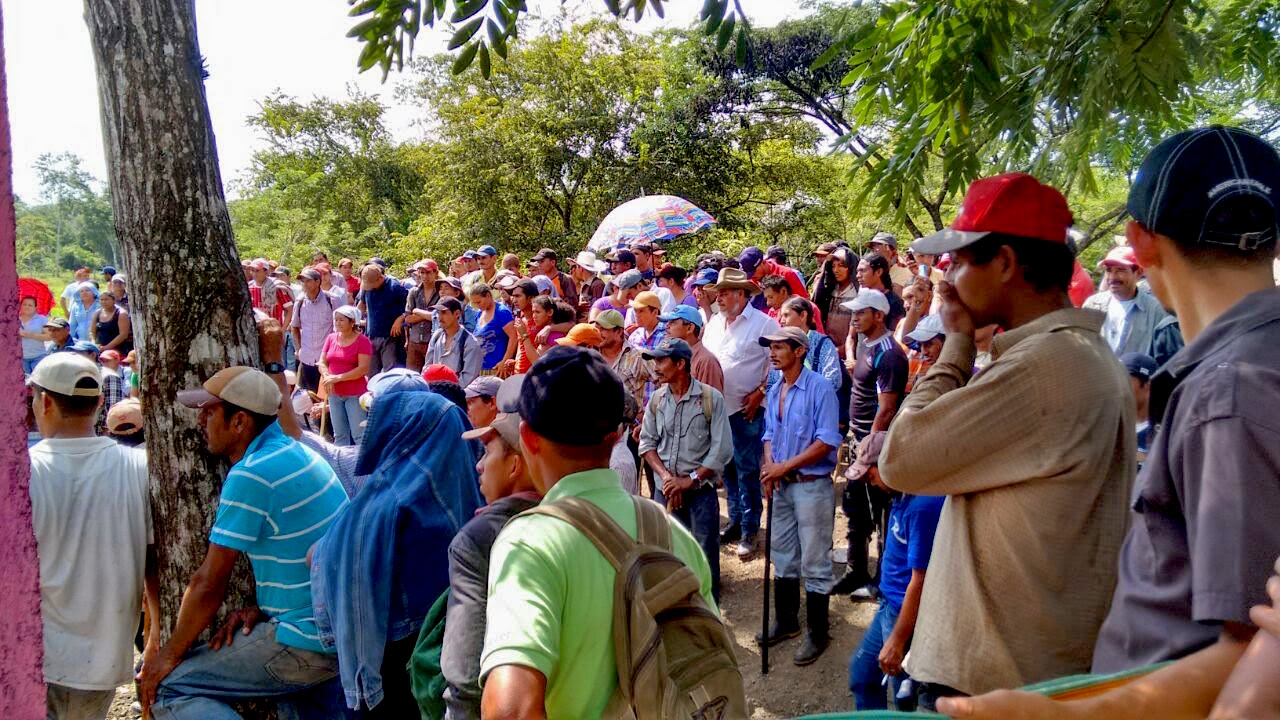Political violence against the peasants of the Nicaraguan Resistance
Rural violence is a persistent, endemic, historical problem in Latin America (Kay, 2001), and Nicaragua has been no exception. The history of the Nicaraguan peasantry over the last forty years shows that they have been subjected to a succession of statist agrarian reform processes. These have taken place in the political sphere – coercion to join organizational processes that ignore the characteristic features of their society; and in the military sphere; violence that has spawned insecurity, promoted by state security agencies and organizations exercising partisan control to punish the peasants for not giving up their demands for freedom. This has exposed a tragic reality, the peasantry’s efforts to change the present injustice having led to an uncertain and potentially crisis-ridden future.
With the rise to power of Sandinismo in 2007 after sixteen years in opposition, rural peasants continue to face one of the worst tragedies as the systematic policy of repression by the state intensifies as a result of their opposition to the ruling party since it first emerged in the 1980s as the so-called “Sandinista Popular Revolution” (1979–1989) against those who took up arms to defend their way of life and historical perception of freedom. This armed struggle cost more than 30,000 lives, and it was the peasants who were the historical subject in what has been called the “Contra War.”
Following the signing of the peace accords in 1990, the majority of the combatants demobilized and surrendered their weapons. In spite of the disarmament, political violence has since claimed the lives of more than 400 peasants who were part of the Contra, or their close relatives. According to the testimonies of survivors, relatives, and witnesses; reports from Nicaraguan human rights organizations;1 investigations by independent reporters; and reports from special commissions and international organizations,2 these victims have been murdered with impunity by Nicaraguan state security forces over the past thirty years.
The April 2018 nation-wide popular uprising against the eleven years (2007–2018) of the more recent consecutive Sandinista government once again made the peasantry a target of Sandinismo, since they joined the struggle, having mounted protests in the north of the country since 2013 against extractivist projects. Enormous demonstrations were mounted against Bill 840, which provided for a contract with the Chinese HKND Group to develop free trade zones and infrastructure associated with an interoceanic canal that would run through the country to link the Pacific Ocean with the Caribbean Sea.
The government of Daniel Ortega had approved the bill hastily and without social consensus. Peasants from the area where the canal would run through held more than one hundred marches from 2013 to 2018, to the point that their protest became a large-scale movement. They were repressed, imprisoned and tortured in the period leading up to the April uprising and became key protagonists in it, as they pressured the Sandinista government to step down. In response, government repression left more than 350 dead, hundreds wounded and political prisoners, and exiled more than 80,000 from their homes, both rural and urban.
One of the groups hardest hit by the repression were anti-canal peasants and those from other areas of the country who were identified as being with the former Nicaraguan Resistance. These experiences added to the desire they shared with other social actors to build a new Nicaragua in which they could claim their role as political subjects.
This research report is intended to contribute to knowledge of the key factors and elements that may serve to provide an understanding of the violent relationship between the Nicaraguan state and the country’s peasants in the last four decades, in particular in the following aspects:
a) Historical roots. No form of political violence can be understood and transformed without taking its historical background into account. Violence, as an objective fact and a social construct, is perceived and evaluated differently according to its historical, social and cultural context (Huhn, Oettler, & Peetz, 2007). But different expressions of violence have different meanings and historical effects within a society (Martín-Baró, 2012).
This study covers thirty-nine years, 1980–2019, dividing them into three historical periods.3 The FSLN governed during two of the periods, the first in the 1980s and the most recent from 2006 to the present. In both periods, state violence reached its highest and most lethal levels in different ways. In the 1980s, the internal armed conflict escalated and in the most recent period since 2007, a resurgence of violence began, although covertly, with Sandinismo’s new rise to power until it became overt and intensified in the April 2018 sociopolitical crisis.
b) In these two Sandinista government periods (during the 1980s and in 2007–2019), there is a certain continuity due to common elements related to the regime’s authoritarian, centralized, vertical manner of controlling and exercising power, and their vision of the state and way of relating to society (Ferrero Blanco, 2015; Carrión, 2019), and especially to the peasantry (Fauné, 2014; Rueda, 2015).
future.


